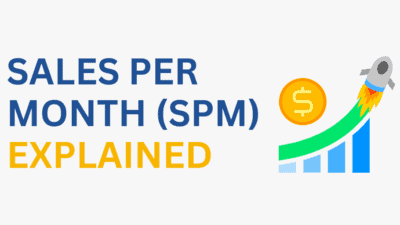Manual Sourcing – Boring But Effective
Welcome to the next blog post in the Mastering Online Arbitrage series, where we dive into different sourcing methods to help you secure profitable deals.
If you’ve been following along, you’ll know that finding great deals before the competition is essential for success in online arbitrage. In our last post, we covered newsletter sourcing, a method that brings deals straight to your inbox. But what if you could go even deeper? What if you could uncover hidden, untapped deals that most sellers overlook? That’s where manual sourcing comes in.
Manual sourcing may not be the quickest or the easiest method, but it’s one of the most effective ways to find profitable, replenishable, and low-competition products.
Let’s break it down.

What is Manual Sourcing?
Manual sourcing is exactly what it says on the tin – manually searching for deals on retailers’ websites. Instead of relying on automated tools or deal alerts, you visit online stores yourself, searching the following categories for profitable products:
✔ Deal sections
✔ Product category pages
✔ Brand category pages
✔ Clearance sections
✔ Brand sales
While this method takes the most time and patience, it also produces some of the best finds that are missed by certain software’s and price drop monitors. Most novice OA sellers skip manual sourcing because they find it boring and tedious, but that’s exactly why it works the best. Less competition = more and higher quality leads.
Now, let’s break down how to do it effectively.

How to Manual Source: Step-by-Step
Here’s how to approach manual sourcing in the most efficient way:
1. Where to Look for Deals
• Use newsletters – Start with deals you receive in your newsletter inbox and manually check for profitable products.
• Visit websites that regularly offer discounts – Some retailers are known for frequent sales (for example, Studio at the start of Q4).
• Look for websites with brand-specific promotions (Some brands run exclusive deals through certain retailers).
• Check sites where you’ve previously found good deals. If a store has provided profitable products before, chances are they will again, especially during the same time of year to the previous sale.
• Explore niche or lesser-known websites. These often have clearance sections that have not already been sourced.
2. How to Check for Profitable Products
• Instead of clicking the SellerAmp button when analysing a product, open Amazon separately and copy and paste the product title into Amazon. SellerAmp doesn’t always detect variation listings or products with different EANs. Searching manually on Amazon can help you find alternative listings that could be even more profitable. Ensure the listing matches the brand correctly to avoid misbranded products that could lead to issues down the line.
• Once you are on the Amazon listing, then use SellerAmp or Keepa to analyse the deal properly.
3. Stay Consistent and Patient
• Be patient when manually sourcing, ensure you do not leave a website or sale section too soon, you may miss out on products .
• Try to analyse deals quickly, do not dwell on deals for too long, the more products you can scan, the better.
• The key is persistence—keep searching, refining your process, and learning from your results.
Pros & Cons of Manual Sourcing
Pro’s:
✅ Find the best deals – Many profitable products are hidden in places automated sourcing tools won’t catch.
✅ Untapped products – Less competition means better margins.
✅ Replenishable products – Find items you can keep restocking.
✅ Opportunity to clear stock – Sometimes you can buy out all remaining inventory for a strong profit (see image below of a recent product i found manually sourcing where i cleared the stock).
✅ Discover new brands & websites – Expand your sourcing network over time.
✅ Identify sales patterns – Learn when and where to expect certain deals.
Cons:
❌ Time-consuming – Requires patience and consistency.
❌ Not always productive – Some days, you won’t find anything.
❌ Can feel repetitive – It’s not the most exciting method.
❌ Less efficient compared to automated sourcing (But it uncovers the deals software misses).

Manual Sourcing Hacks
Want to make manual sourcing more effective? Here are some game-changing hacks:
1. Build a Brand & Website List
• Keep track of brands and websites that frequently have profitable products.
• This helps you save time when revisiting sites.
2. Save Near-Profitable Products
• If a product isn’t quite profitable yet, bookmark it in a dedicated folder.
• Check back later, prices fluctuate, and a discount or voucher could turn it into a great deal.
3. Always Check for Coupon Codes
• Before dismissing a product, see if there are any active discount codes that could make it profitable.
• Many retailers offer site-wide discounts that aren’t immediately obvious.
(We’ll cover coupon codes in more detail in a later post.)
4. Stay Organized
• Keep detailed notes on which sites and brands consistently provide good deals.
• Over time, you’ll develop a go-to sourcing strategy that works for you.

Final Thoughts
Manual sourcing is a method that all serious online arbitrage sellers use. While it’s more time-consuming than other sourcing strategies, it also provides some of the best and most profitable deals.
To maximize efficiency, don’t rely on just one sourcing method. Mix manual sourcing with automated tools, newsletter sourcing, and other strategies to keep things fresh and effective.
That’s it for this week’s post, time to start finding those hidden deals
You can find other articles in this series here:
Mastering Online Arbitrage – Part 1
Mastering Online Arbitrage – Part 2
Mastering Online Arbitrage – Part 3
Mastering Online Arbitrage – Part 5




